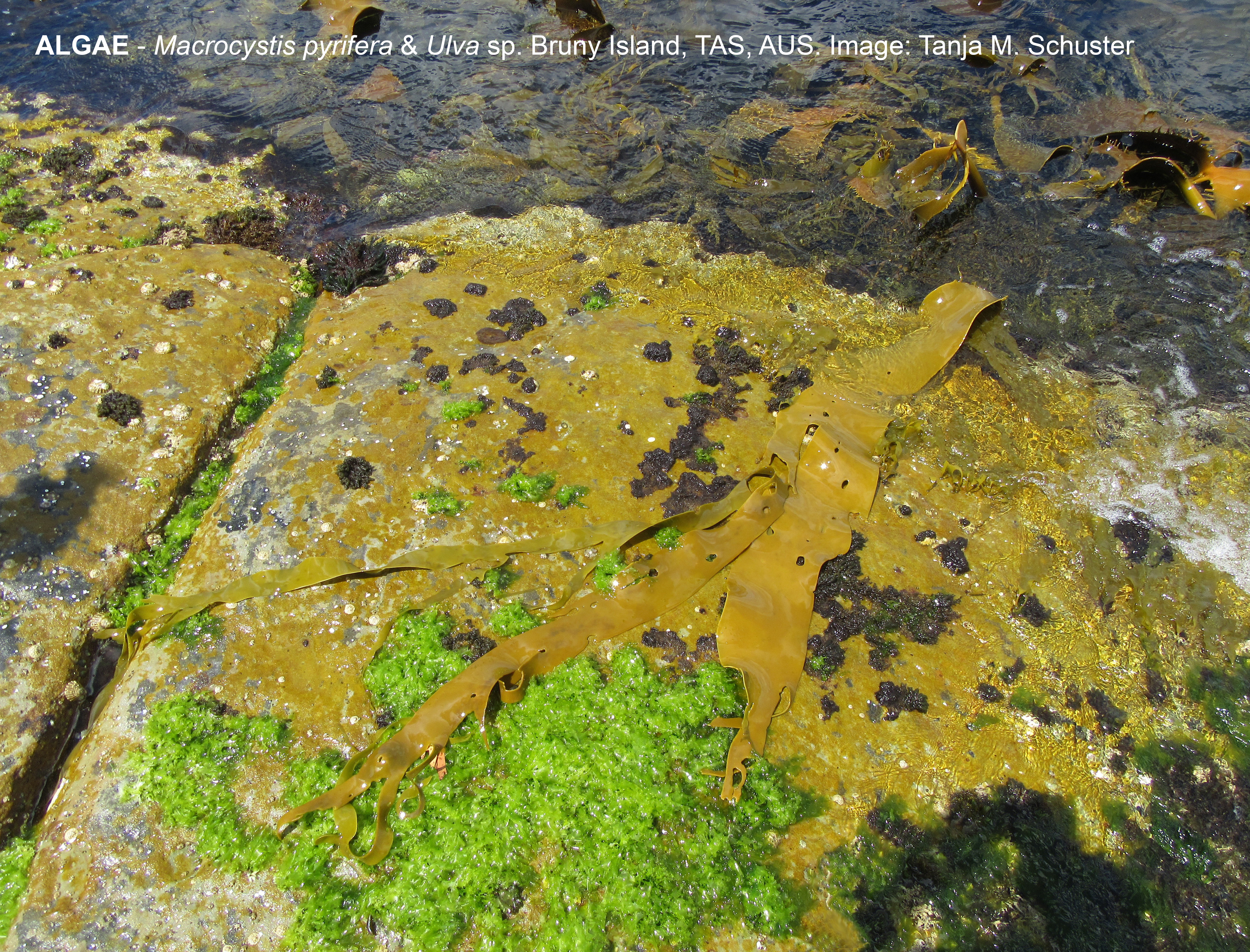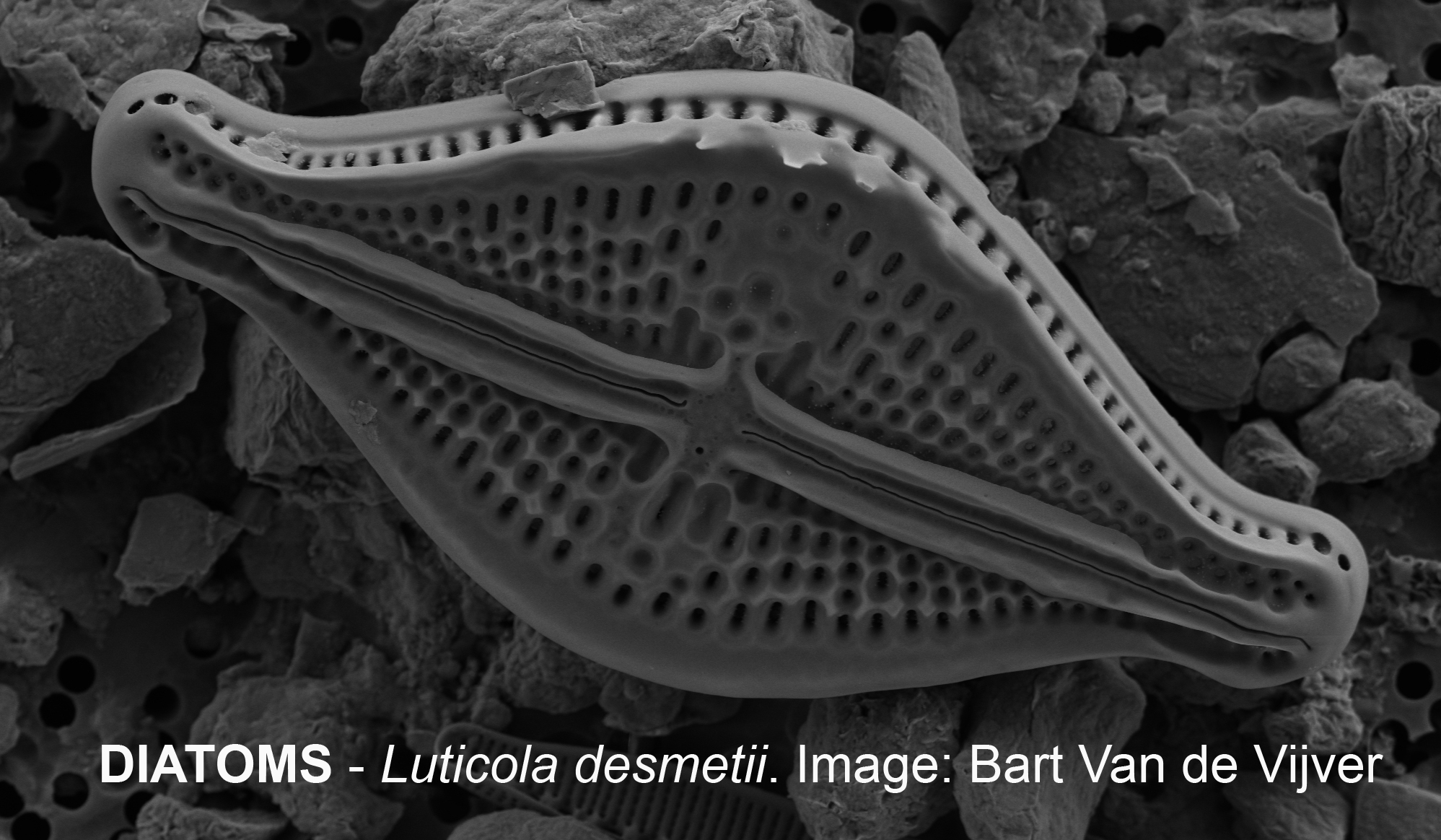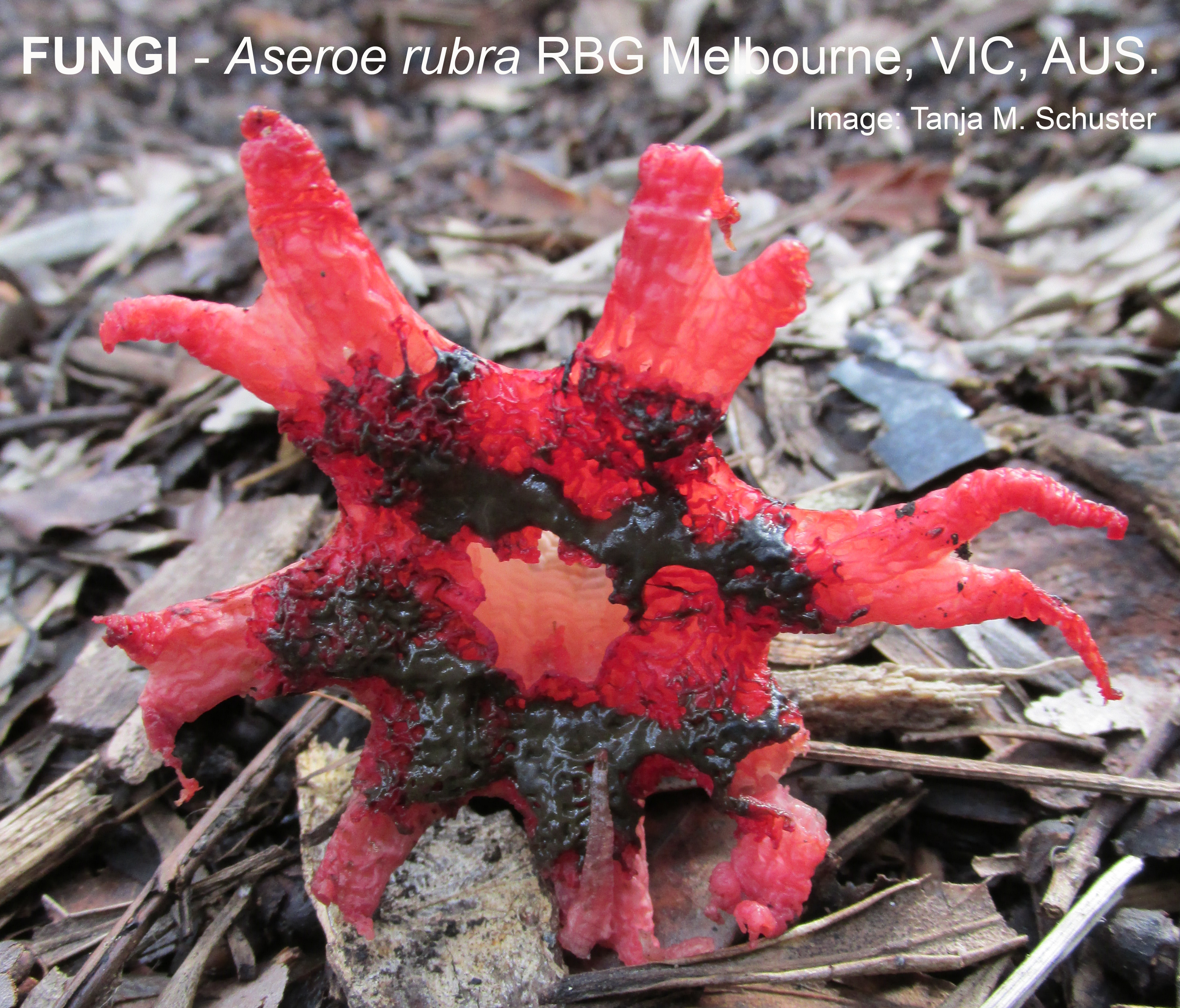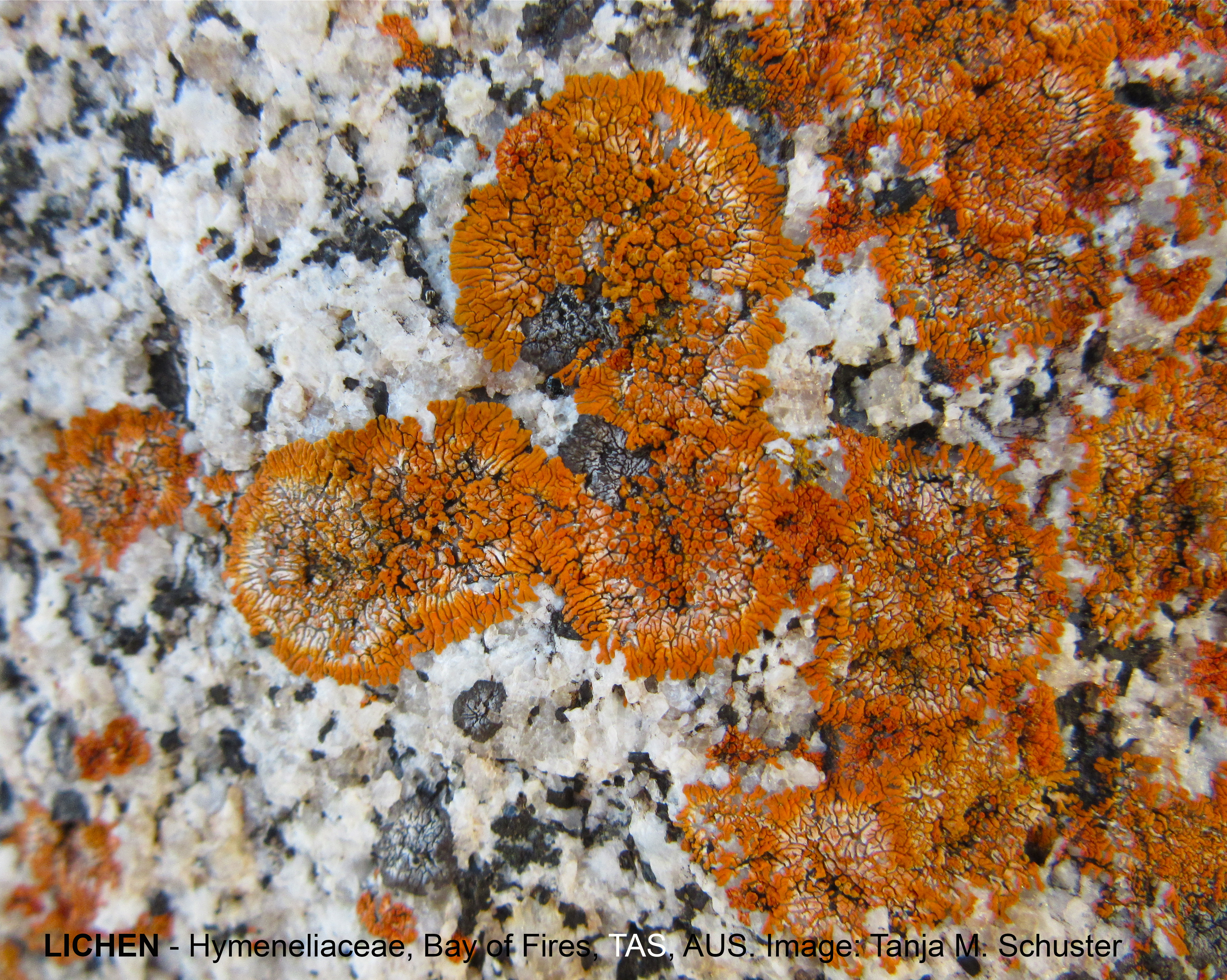Dr.
Tanja Schuster
Making specimens and associated
data available according to the FAIR principles (findable – accessible – interoperable – reusable) enables biodiversity research.
Hence, one focus for research projects in the W cryptogam collection is their digitisation, and by default their organisation.
This is the basis for in-house and external taxonomic research of a collection rich in historical and original material, especially
specimens from the 19th and 20th centuries, and particularly types. Except for selected types, few of
the estimated 1.5 mio specimens of the W cryptogam collection have been digitised to date. Currently, we are working on serving
online those collections requested most by external researchers: 1) the Grunow diatom and 2) the Lindenberg liverwort collections.
Digitised data are available via the online portal JACQ (https://www.jacq.org/#database).
Both projects are works in progress and will take time as scant resources allow.
Digitisation of
the Grunow collection (diatoms)
Approximately 3,000 taxon names are attributed to the phycologist Albert Grunow
(1826 – 1914). He deposited his collection of diatoms and macroalgae, mainly Sargassum, at W in 1899. Grunow’s diatom
collection, his ‘Herbar’, formed the basis of the general diatom collection at W, but there are many additional parts to this
complex collection. It contains several different object types, such as unmounted material and herbarium specimens in capsules,
fossil samples in historical pill boxes, a catalogue listing the samples he worked with, slides (historical and current preparations)
for microscopy, drawings done by Grunow, and books annotated by him including sample numbers for his illustrations. The catalogue,
drawings, and annotated books are important for locating type and original material. The parts of the collection are organised
according to several different numbering systems or alphabetical by family, genus, and species in the general collection (see
Schuster et al. 2022, 2023 in the ‘Publications’ tab for more detailed information). Grunow’s catalogue lists 3,278 sample
numbers, ca 1,400 of his slides are still extant, and there are ca 15,000 drawings.
Due to the size and complexity
of the collection, we are tackling digitisation of the different parts step by step. As Grunow’s drawings are the basis for
his descriptions and note the sample numbers he used and other salient details, the drawing collection is the first portion
to be digitised. A first step is QR-coding, i.e. assignment of a unique, stable identifier, followed by imaging and transcription
of all taxon names on folders in Grunow’s drawing collection. This forms the taxonomic backbone for entering any other data
in JACQ. Further steps are the QR-coding and imaging of each sheet with drawings. Next steps are the transcription of the
catalogue pages, which have been imaged. The slides will eventually also be imaged to document which are still available,
their preparation type (air mount with shellac, Canada balsam, etc.) and preservation state, and the label information, even
if scant. Digitisation of the general collection and still available unmounted material are to follow.
Digitisation
of the Lindenberg collection (liverworts)
Johann B.W. Lindenberg (1781–1851) specialised in bryophytes and his
liverwort collection at W is particularly noteworthy. Together with K.M. Gottsche and C.G.D. Nees von Esenbeck, he published
‘Synopsis Hepaticarum’ (1844-1847), still one of the most relevant texts for liverwort taxonomy. The collection at W was the
basis for this publication and is particularly important as Lindenberg’s collection deposited at B was destroyed during WWII.
The collection incorporates specimens from many other important historical bryophyte specialists and includes many types and
original material. Lindenberg’s object catalogue, i.e. the list of specimens bought in 1860 by the Botanisches Hofcabinet,
the forerunner of the Botany Department at the Natural History Museum Vienna, includes 9,089 inventoried specimens, most of
which we have been able to locate.
In order to digitise the collection, we had to locate Lindenberg’s specimens
among all others in the type and general liverwort collections at W. To facilitate digitisation, the specimens are being QR-coded,
i.e. receive a stable, unique identifier, which are subsequently to be used for citation in publications. A portion of specimens
that contained multiples of initial inventory numbers (series) in a single capsule undergo additional physical preparatory
steps (e.g. https://w.jacq.org/W0260455). The initial inventory
number was assigned upon purchase of the collection and is in print sometimes referred to as ‘Lindenberg’ or ‘Hofcabinet’
number. Databasing the Lindenberg collection also required a significant effort in adding taxon names in JACQ to create the
taxonomic backbone necessary for subsequent data entry. As part of the digitisation process, the specimens are imaged for
documentation and to enable label entry from a digital twin of the physical specimen. During a first pass, basic data points
are entered into the database for all ca 9,000 specimens. These include the initial inventory number, QR code, and taxon name.
Note that the latter denotes the name where the specimen is filed physically, i.e. it is not necessarily the currently accepted
name; for types this is the basionym. Data entry of all label data will be fleshed out as particular specimens are required
for publication and as resources allow.
Note to external researchers requesting (digitisation
of) specimens:
As the projects above hint, accomplishing any specimen-based research requires several collection
management and digitisation steps, as detailed below. Be aware, that all W specimens require these steps
to document them and make them citation-ready via QR-codes, as previously used accession or acquisition numbers are now obsolete.
As the collection is large and complex, it is time-consuming to search physically. Therefore, please plan well ahead and contact
us as early as possible to be able to cover these necessary steps. Please consider requesting funding during relevant grant
applications for this work to be undertaken, including visits to the collection on your part, as resources at W are limited:
- Locating specimens: This is not as trivial as one might assume. Specimens may be field under any and/or multiple synonym(s), and the herbarium is not ordered according to geographic regions. In addition, the collection is mainly from the 19th and 20th centuries and global in scope. Reading a multitude of handwritten labels in wildly differing, antiquated script and with potentially long obsolete placenames is a major time-consuming step for finding specimens and digitising the label data.
- Collection management and specimen preparation, overhauling specimens: This refers to the physical preparation of specimens according to accepted community standards, such as putting specimens in protective capsules or folders, or mounting onto card to protect them. As it is an old collection, many specimens need to be updated such.
- Collection management and specimen preparation, QR codes: Affixing of a human and machine readable QR code label to each specimen element. As of January 2020, the QR code is the herbarium accession number and stable, unique identifier for W specimens necessary for citation. Note that previous acquisition numbers in the form of a stamped four-digit year plus a running number are now obsolete and should not be cited. The stable, unique identifier for a particular specimen can also be cited as URL for linking to JACQ from publications. The URL is the first line shown in the JACQ output page and always begins with https://w.jacq.org/W and ends with the QR code number.
- Digitisation, adding names to the database (JACQ): Establishing any relevant names (family, genus, species, variety, basionym, synonyms, etc.) that have to be added to the taxonomic backbone of the JACQ database in order to enter any other specimen data. This includes taxon-specific stable, unique identifiers, as used in AlgaeBase, DiatomBase, Mycobank, Tropicos, etc. Entering of collector(s) and taxon author(s) and combinations thereof. Also, inclusion of nomenclatural information (e.g. type and synonym status, which may need to be evaluated using the primary literature) in JACQ. As relatively few cryptogams are digitised, many names still need to be added on an ongoing basis.
- Digitisation, label and annotation data: This encompasses entry of collector(s), their number, collection date, and collection locality among other data, such as series numbers of exsiccata, information on annotation labels, identification history, noting who did the typification, and other relevant information. It can be time-consuming to decipher difficult to read label data and abbreviations in a huge variety of historical script.
- Digitisation, georeferencing: Although locality data are often scant for historical specimens, they are nonetheless important for identifying type and typoid material. Deciphering archaic and idiosyncratic script and unfamiliar or obsolete place names and reference to dated (country) boundaries can make this task challenging. In addition, there is no geographic grouping for specimens kept at W.
- Digitisation, high-resolution specimen photos: Although it can be argued that such images are not as relevant for cryptogams, as few of the characters necessary for identification are visible, we argue that seeing the label, condition, and amount of a specimen is valuable information, and therefore include images. This also documents specimens before releasing them through physical loans for study.
EMPOLYMENT
Vienna, Austria.
2019 – 2020 Instructor Botany and Species identification,
including excursions. Ludwig Maximilian University,
Munich, Germany.
2018 – 2020 Project Coordinator Taxon-OMICS (DFG SPP 1991). Ludwig
Maximilian University, Munich, Germany.
2013 – 2018 Pauline Ladiges Plant Systematics Research Fellow. The
National Herbarium of Victoria (MEL) & The University of
Melbourne, Melbourne, Australia.
2012 – 2013 Curator Norton-Brown Herbarium (MARY). The University
of Maryland, College Park, USA.
2011 – 2012 Plant Systematics Laboratory Manager & Herbarium
Curator Fabaceae (ECUH). East Carolina University,
Greenville, USA.
2005 – 2011 Teaching Assistant Cell Biology, Greenhouse/Living
Collections, Herbarium, Principles in Biosystematics.
Wake Forest University, Winston-Salem, USA.
2009 Research Assistant. Wake Forest University, Winston-
Salem, USA.
Project: Evolution and Diversification of Azaleas and
Rhododendrons (Rhododendron, Rhodoreae, Ericoideae,
Ericaceae).
2006 Research Assistant. Wake Forest University, Winston-
Salem, USA.
Project: Phylogenetic, Biogeographic and Monographic
Studies in the Wintergreen Group.
2003 – 2004 Research Assistant. The City University of New
York, Research Foundation, Bronx, New York, USA.
Project: Calcium ATPase markers in Poaceae.
2002 – 2003 Lecturer Plants and People. The City University of New
York, Herbert H. Lehman College, Bronx, New York, USA.
ACADEMIC EDUCATION
2011 Doctor of Philosophy, Biology – Plant Systematics.
Wake Forest University, Winston-Salem, North Carolina,
USA.
Dissertation: The Evolutionary Relationships of Polygoneae
Rchb. (Polygonaceae) with an Emphasis on the Amphi-
Pacific Muehlenbeckia Meisn.
Dissertation Advisor: Kathleen A. Kron, PhD
2004 Master of Arts, Plant Sciences.
City University of New York (CUNY), Herbert H. Lehman
College, Bronx, New York, USA.
Thesis: A plant survey of the Hallett Nature Sanctuary in
Central Park, New York
Thesis Advisor: Dwight Kincaid, PhD
2002 Bachelor of Arts magna cum laude, Biology.
City University of New York (CUNY), Herbert H. Lehman
College, Bronx, New York, USA.
PEER REVIEWED
Schuster TM, Riedl DM, Fiedler S, Krenn M, Rainer H, Mabberley DJ. 2023. The significance of illustrations as nomenclatural types in botany: “iconotypes” at the Natural History Museum Vienna, and the importance of color systems, such as those utilized by Ferdinand Bauer [1760–1826]. Plant Science Bulletin 69(3): 170–175. PDF: https://botany.org/home/publications/plant-science-bulletin.html
Van de Vijver B, Schuster TM, Kusber WH, Leurs W. 2023. Observations and lectotypification of Caloneis warmingii Østrup (Naviculaceae, Bacillariophyceae). Notulae Algarum 302. PDF: https://www.notulaealgarum.com/2023/index.html
Van de Vijver B, Schuster TM. 2023. Observations on the types of Nitzschia tubicola and N. gandersheimiensis (Bacillariaceae, Bacillariophyceae). Notulae Algarum 301. PDF: https://www.notulaealgarum.com/2023/index.html
Williams DM, Schuster TM, Cesar E, Jüttner I. 2023. “Transformative Sampling” of mounted and already damaged diatom type specimens: A first example using the “neotype” of Tabellaria fenestrata var. aterionelloides Grunow from Cleve & Möller’s Diatoms (1877-1882). Nova Hedwigia 117(1–4): 7–24. DOI: https://doi.org/10.1127/nova_hedwigia/2023/0863
Rainer H, Berger A, Schuster TM, Walter J, Reich D, Zernig K, Danihelka J, Galušková H, Mráz P, Tkach N, Hentschel J, Müller J, Wagner S, Berendsohn W, Lücking R, Vogt R, Pignotti L, Roma-Marzio F, Peruzzi L. 2023. Community curation of nomenclatural and taxonomic information in the context of the collection management system JACQ. Biodiversity Information Science and Standards 7: e112571. DOI: https://doi.org/10.3897/biss.7.112571
Van de Vijver B, Schuster TM, Hofmann G, Kennedy B, Hürlimann J, Kusber WH. 2023. Revision of European Brachysira species (Brachysiraceae, Bacillariophyta): IV. the Brachysira vitrea group. Nova Hedwigia 117(1–4): 279–318. DOI: https://doi.org/10.1127/nova_hedwigia/2023/0839
Schuster TM, Hamilton PB, Haring V, Edlund MB, Van de Vijver B. 2023. An introduction to the catalogue of Albert Grunow’s 19th century diatom collection at W including a palaeographic aid. Annalen des Naturhistorischen Museums in Wien, Serie B, Botanik und Zoologie 125: 101–122. PDF: https://www.nhm-wien.ac.at/verlag/wissenschaftliche_publikationen/annalen_serie_b/125_2023
Toyoda K, Cox EJ, Williams DM, Schuster TM. 2023. Studies on type material from Kützing’s diatom collection VII: Achnanthes capensis Kützing, Achnanthes capensis ß [var.] multiarticulata Kützing and ‘Achnanthes striata Suhr’. Diatom Research 38(1): 21–31. DOI: https://doi.org/10.1080/0269249X.2023.2173308
Van de Vijver B, Schuster TM, Steinn Jónsson G, Hansen I, Williams DM, Kusber WH, Wetzel CE, Ector L. 2023. A critical analysis of the Fragilaria vaucheriae complex (Bacillariophyta) in Europe. Fottea 23(1): 62–96. DOI: https://doi.org/10.5507/fot.2022.013
Van de Vijver B, Schuster TM. 2022. Typification of Synedra filiformis Grunow and its transfer to the genus Fragilaria (Fragilariaceae, Bacillariophyta). Notulae Algarum e253. PHP: https://notulaealgarum.org/2022/index.php
Van de Vijver B, Morales E, Schuster TM, Wetzel CE, Ector L. 2022. Typification and morphology of Staurosirella lapponica (Grunow) D.M.Williams & Round and Staurosirella pinnata var. intercedens (Grunow) P.B.Hamilton (Staurosiraceae, Bacillariophyta). Nova Hedwigia 115(1–2): 31–45. DOI: https://doi.org/10.1127/nova_hedwigia/2022/0697
Van de Vijver B, Schuster TM, Kusber WH, Hamilton PB, Albert RL, Ballings P, Wetzel CE, Ector L. 2021. Revision of European Brachysira species (Brachysiraceae, Bacillariophyta): III. Species formerly included in the Brachysira serians-complex. Botany Letters 169(1): 83–105. DOI: https://doi.org/10.1080/23818107.2021.1941250
Van de Vijver B, Schuster TM, Kusber WH, Williams DM, Wetzel CE, Ector L. 2021. Revision of European Brachysira species (Brachysiraceae, Bacillariophyta): II. The Brachysira styriaca and B. zellensis group. Botany Letters 168(4): 485–502. DOI: https://doi.org/10.1080/23818107.2021.1923062
Van de Vijver B, Schuster TM, Kusber WH, Hamilton PB, Wetzel CE, Ector L. 2021. Revision of European Brachysira species (Brachysiraceae, Bacillariophyta): I. The Brachysira microcephala – B. neoexilis enigma. Botany Letters 168(4):467–484 . DOI: https://doi.org/10.1080/23818107.2021.1909499
Lobban CS, Navarro N, Schuster TM. 2021. Recognition of Grunow’s two Striatella species from Honduras in modern literature, and their transfer to Florella (Bacillariophyta, Cyclophoraceae). Nova Hedwigia 112(3–4): 271-282. DOI: https://doi.org/10.1127/nova_hedwigia/2021/0630
Van de Vijver B, Schuster TM. 2021. Observations and typification of Navicula serians var. thermalis Grunow and its transfer to the genus Brachysira. Notulae Algarum e190. PHP: https://notulaealgarum.org/2021/index.php
Bräuchler C, Schuster TM, Vitek E, Rainer H. 2021. The Department of Botany at the Natural History Museum Vienna (Herbarium W) – history, status, and a best practice guideline for usage and requests. Annalen des Naturhistorischen Museums in Wien, Serie B, Botanik und Zoologie 123: 297–322. PDF: https://www.zobodat.at/pdf/ANNA_123B_0297-0322.pdf
Van de Vijver B, Schuster TM, Williams DM, Kusber WH. 2021. Was Fragilaria pararumpens Lange–Bertalot, G.Hofmann & Werum 2011 new to science? Notulae Algarum e180. PHP: https://notulaealgarum.org/2021/index.php
Van de Vijver B, Ector L, Schuster TM. 2020. Observations on and typification of Navicula difficilis Grunow and its transfer to the genus Humidophila R.L.Lowe & al. (Diadesmidaceae, Bacillariophyta). Notulae Algarum e173. PHP: https://notulaealgarum.org/2020/index.php
Van de Vijver B, Kusber WH, Ector L, Schuster TM, Walter J. 2020. Original material of Fragilaria gloiophila (Grunow) Van de Vijver, Ector, T.M.Schuster & J.Walter (Fragilariaceae, Bacillariophyta) rediscovered in the Grunow collection. Notulae Algarum e161. PHP: https://notulaealgarum.org/2020/index.php
Van de Vijver B, Ector L, Schuster TM, Walter J. 2020. Observations on and typification of Synedra gloiophila Grunow (Fragilariaceae, Bacillariophyta) and its transfer to the genus Fragilaria Lyngbye. Notulae Algarum e145. PHP: https://notulaealgarum.org/2020/index.php
Fowler RM, McLay TGB, Schuster TM, Buirchell BJ, Murphy DJ, Bayly MJ. 2020. Plastid phylogenomic analysis of tribe Myoporeae (Scrophulariaceae). Plant Systematics and Evolution 306: e52. DOI: https://doi.org/10.1007/s00606-020-01678-4
Renner SS, Barreda VD, Tellería MC, Palazzesi L, Schuster TM. 2020. Early evolution of Coriariaceae (Cucurbitales) in the light of a new Campanian (ca. 82 Mya) pollen record from Antarctica. Taxon 69: 87–99. DOI: https://doi.org/10.1002/tax.12203
Gemeinholzer B, Vences M, Beszteri B, Bruy T, Felden J, Kostadinov I, Miralles A, Nattkemper TW, Printzen C, Renz J, Rybalka N, Schuster TM, Weibulat TM, Wilke T, Renner SS. 2020. Data storage and data re-use in taxonomy – the need for improved storage and accessibility of heterogeneous data. Organisms Diversity & Evolution 20: 1–8. DOI: https://doi.org/10.1007/s13127-019-00428-w
von Mering S, Akhani H, Arias S, Berendsohn W, Borsch T, Castañeda-Noa I, de Vos J, Dillenberger M, Eggli U, Fleischmann A, Flores-Olvera M, Hernández-Ledesma P, Kadereit G, Klak C, Korotkova N, Malekmohammadi M, Moore A, Nyffeler R, Ocampo G, Ortiz Díaz J, Oxelman B, Rabeler R, Schlumpberger B, Schuster TM, Timaná M, Uotila P & Zuloaga F. 2019. The Global Caryophyllales Initiative: Towards an updated taxonomic backbone and a dynamic monograph of a major plant group. Biodiversity Information Science and Standards 3: e35357. DOI: https://doi.org/10.3897/biss.3.35357
Schuster TM, Setaro SD, Tibbits JFG, Batty EL, Fowler RM, McLay TGB, Wilcox S, Ades PK, Bayly MJ. 2018. Chloroplast variation is incongruent with classification of the Australian bloodwood eucalypts (genus Corymbia, family Myrtaceae) PLoS ONE. DOI: https://doi.org/10.1371/journal.pone.0195034
Schuster TM, Gibbs MD, Bayly MJ. 2018. Annotated plastome of the temperate woody vine Muehlenbeckia australis (G.Forst.) Meisn. (Polygonaceae). Mitochondrial DNA Part B: Resources. 3(1): 399–400. DOI: https://doi.org/10.1080/23802359.2018.1456979
Schuster TM, Stajsic V, Bonito GM. 2016. False Polygonaceae Smut: increasing knowledge about Sphacelotheca polygoni-serrulati Maire in Australia. Muelleria 34: 83–102. PDF:
https://www.rbg.vic.gov.au/documents/MuelleriaVol_34_-_p83_Schuster.pdf
Schuster TM, Reveal JL, Bayly MJ, Kron KA. 2015. An updated molecular phylogeny of Polygonoideae (Polygonaceae): Relationships of Oxygonum, Pteroxygonum, and Rumex, and a new circumscription of Koenigia. Taxon 64(6): 1188–1208. DOI: https://doi.org/10.12705/646.5
Judd W, Nickrent D, Robertson K, Abbott JR, Campbell C, Carlsward BS, Schuster TM, Neubig KM, Zona S, Donoghue M, Kellogg E. 2015. Photo Gallery of Vascular Plants (to accompany Plant Systematics, Fourth Edition). Sinauer Associates, Sunderland, MA. ISBN: 978-1-60535-574-0. https://pgvp.sinauer.com/
Schuster TM, Setaro SD, Kron KA. 2013. Age estimates for the buckwheat family Polygonaceae based on sequence data calibrated by fossils and with a focus on the amphi-Pacific Muehlenbeckia. PLoS ONE. DOI: https://doi.org/10.1371/journal.pone.0061261
Schuster TM, Reveal JL, Kron KA. 2011. Phylogeny of Polygoneae (Polygonaceae: Polygonoideae). Taxon 60(6): 1653–1666. DOI: https://www.jstor.org/stable/23210276
Schuster TM, Wilson KL, Kron KA. 2011. Phylogenetic relationships of Muehlenbeckia, Fallopia and Reynoutria investigated with chloroplast and nuclear data. International Journal of Plant Sciences 172(8): 1053–1066. DOI: https://doi.org/10.1086/661293
Sanchez A, Schuster TM, Burke J, Kron KA. 2011. Taxonomy of Polygonoideae (Polygonaceae): A new tribal classification. Taxon 60(1): 151–160. DOI: https://www.jstor.org/stable/41059829
Sanchez A, Schuster TM, Kron KA. 2009. A large scale phylogeny of Polygonaceae and its implications for taxonomic circumscriptions. International Journal of Plant Sciences 170(8): 1044–1055. DOI: https://doi.org/10.1086/605121
Delprete PG, Schuster TM, Hiepko P. 2005. An annotated translation of Karl Schumann’s 1888 Über einige verkannte oder wenig gekannte Geschlechter der Rubiaceen Südamericas” [“about some misunderstood or little-known taxa of South American Rubiaceae”] with notes on the Rubiaceae type specimens kept at Berlin Herbarium. Botanische Jahrbücher für Systematik, Pflanzengeschichte und Pflanzengeographie 126(1): 3–69. DOI: https://doi.org/10.1127/0006-8152/2005/0126-0003
POPULAR SCIENCE BOOKS
Schuster TM, Dressler S, Kanz B, Printzen C, Wenders W, Pellerin D, Campany D, Renner SS. 2022. Sebastian Cramer: TWO VIEWS ON PLANTS - A Stereoscopic Photo Book. 192 pp. Berlin: Hatje Cantz.- Collections-based research.
- Taxonomic work on diatoms, focussing on the Grunow collection (W) and cross-linking multiple institutions.
- Evolution of angiosperms using molecular and morphological data for phylogeny reconstruction of Polygonaceae, Coriariaceae, Ericaceae, and Myrtaceae (Angophora and Corymbia).
- Comparative genomics using High Throughput Sequencing (HTS) data.
- Invasive Polygonaceae (Reynoutria [Fallopia], Koenigia [Aconogonon]).
- Polygonaceae as host plants of fungi.
- Southern Hemisphere biogeography.






